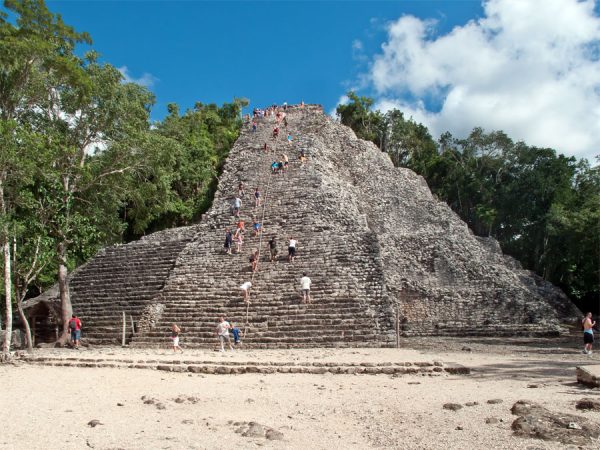Visitors have generated a revenue of more than four million pesos in seven archaeological sites in the state of Quintana Roo.
The reactivation of cultural tourism in Quintana Roo allowed an income of 4,448,735 pesos in seven archaeological sites that reopened in the September-October two-month period, according to INAH figures.
According to the most current report from the National Institute of Anthropology and History (INAH), the ruins of Tulum, Cobá, San Gervasio and Muyil, which reopened on September 14th, generated one million 628 thousand 330 pesos for admission tickets, only during the month of September.
The archaeological sites mentioned, as well as Kohunlich, Dzibanché-Kinichná, and Oxtankah that were reactivated on October 5, generated two million 820 thousand 405 pesos, during October.
Official statistics specify that of the 82 thousand 299 people who entered the premises of these seven archaeological sites open to the public, there were 59 thousand 442 (72.22%) who did pay their entrance cover.
While 22,857 (27.78%), such is the case of teachers, students, older adults, pensioners, retirees, people with disabilities, federal dependency workers, or residents on Sunday, did not represent monetary income.
Most of the income came from the four archaeological zones in the center and north of the state, located in the municipalities of Felipe Carrillo Puerto, Tulum and Cozumel, with a total of four million 403 thousand 005 pesos, during the month and a half indicated; In other words, the three other sites located in the Othón P. Blanco municipality, earned 45 thousand 730 pesos.
Margarito Molina Rendón, delegate of INAH in Quintana Roo, stated that the visits of national and foreign tourists will continue to increase as the months go by, so a better reactivation of the sector is expected.
Among the sanitary measures that are obligatorily applied inside the enclosures, it is worth mentioning the use of a mask and antibacterial gel, respecting the healthy distance and 60% capacity to avoid crowding of people.
The federal official explained that it has been a difficult season for cultural tourism, not only at the national level but also locally, derived from the Covid-19 pandemic, as it caused the closure of archaeological sites as of March 23 of this year.
He stressed that for now only seven of the 13 areas have the authorization of reactivation and it will be the authorities of the central offices of the INAH that decide on the remaining six.
Similarly, he explained that promotions continue to be applied to national tourism, which is mainly a discount or even free entry, as long as the knowledge of the local culture is encouraged among the families of Quintana Roo.
The figures reveal that Tulum, Cobá, San Gervasio and Muyil recorded 80,936 admissions; while Kohunlich, Dzibanché-Kinichná and Oxtankah have a tally of 1,363 visits.
Regarding the nationality of the people, foreign tourism is the one that has visited the archaeological sites in the north the most; however, national tourism has been higher in the case of the southern zone.
Last year, in the same two-month period, there were 289,375 people who visited the aforementioned seven ruins of Quintana Roo, so the impact is extensive, almost four times less than in the present period.


